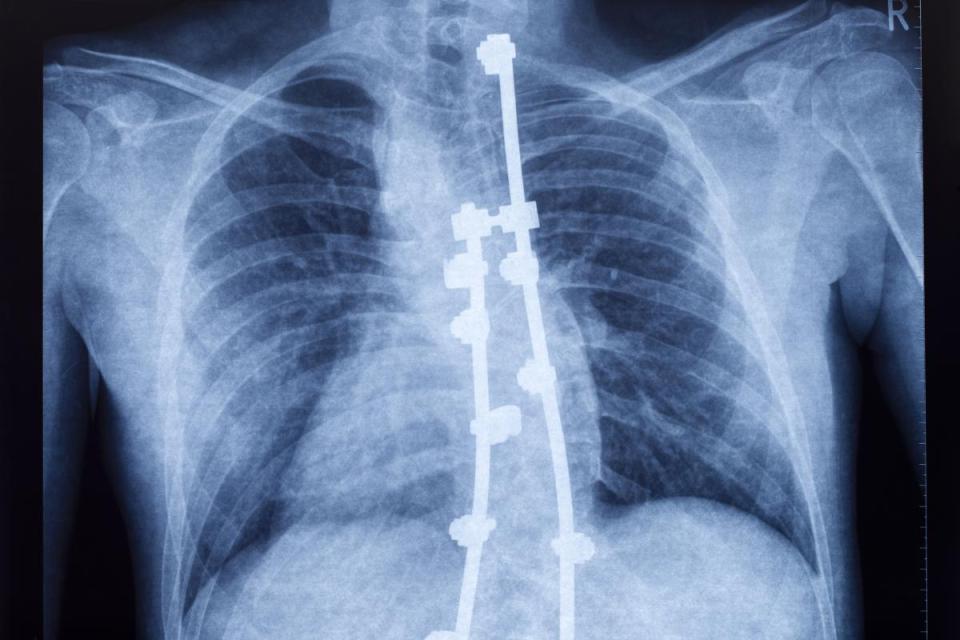Spinal deformities
Treatment
The primary treatment options for scoliosis are bracing and physical therapy. A back brace can’t straighten the spine, but it can prevent the curvature from getting worse, and can give you some pain relief. This treatment is more effective for cases detected early. If scoliosis continues to get worse and bracing and/or physical therapy is not working for the patient or interrupting your daily life or causing you discomfort, surgery may be considered.
Kyphosis
Also known as having a rounded back or hunchback, this is a condition in which the spine in the upper back has an excessive curvature. Patients are often unable to stand up straight and walk in a forward-flexed posture. Kyphosis can occur at any age, but often seen in older women suffering from osteoporosis.
Symptoms
- Visible hump on upper back
- Slouching appearance
- Rounding of shoulders
- Breathing difficulties
Diagnosis
Similar to scoliosis, your doctor will first perform a physical exam. You may then undergo imaging tests to determine what treatment options are best for you.
Treatment
In general, treatment is determined based on the severity of your spinal curvature disorder. A mild case of postural kyphosis may just need physical therapy or not need any treatment at all. More severe cases may require the use of a back brace or surgery if pain or discomfort gets worse.
